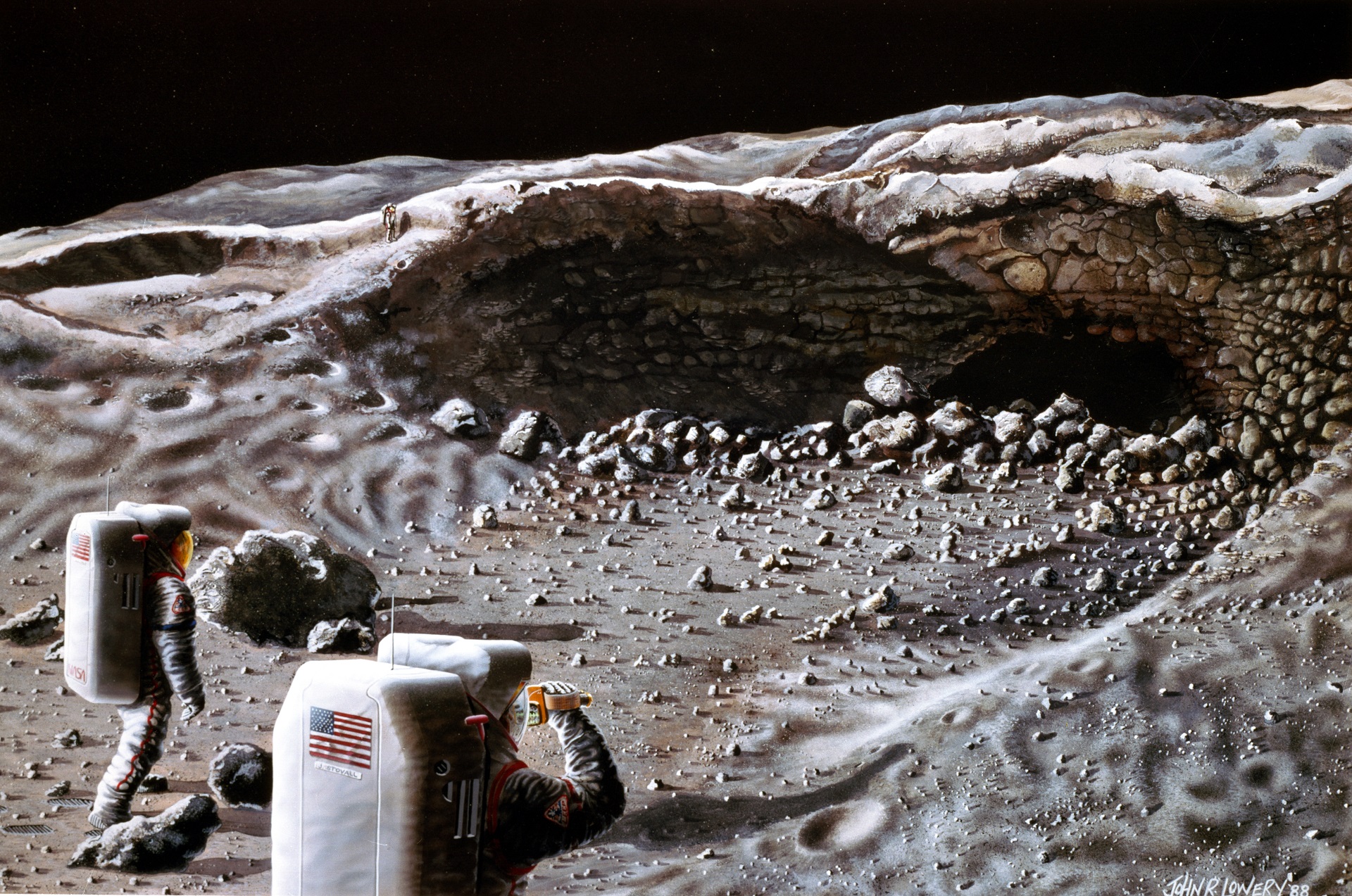Scientific Research and Exploration: Nasa Moon Caves

Nasa moon caves – Lunar caves offer a unique environment for scientific research and exploration, providing valuable insights into the Moon’s geological and astrobiological history. Their pristine and protected conditions have preserved evidence of past and present processes, making them ideal sites for studying the Moon’s formation, evolution, and potential for supporting life.
Geological Findings
- Lunar caves have revealed evidence of ancient volcanic activity, including lava flows, pyroclastic deposits, and volcanic glass.
- They have also preserved samples of lunar regolith, which provide information about the Moon’s surface processes and bombardment history.
- The study of cave walls and ceilings can provide insights into the Moon’s geological stratigraphy and the processes that have shaped its surface over time.
Astrobiological Findings
- Lunar caves offer potential habitats for microorganisms, as they provide protection from radiation and extreme temperatures.
- Evidence of past water activity in lunar caves has raised the possibility of finding biosignatures or even extant life forms.
- The study of lunar caves can help us understand the limits of life and the potential for life beyond Earth.
Astronomical Observations and Scientific Research
- Lunar caves can be used as platforms for astronomical observations, as they provide a stable and shielded environment.
- They can be used for radio astronomy, infrared astronomy, and other observations that are not possible from the Moon’s surface.
- Lunar caves can also be used as laboratories for conducting scientific experiments in a controlled environment.
Technological Innovations and Mission Design

Exploring and utilizing lunar caves requires significant technological advancements. These caves present unique challenges due to their extreme environments, limited accessibility, and potential scientific significance. To overcome these challenges and enable safe and efficient exploration, innovative technologies are necessary.
Mission design for lunar cave exploration poses unique challenges. These include the need for specialized equipment, navigation systems, and communication capabilities. Additionally, the safety of astronauts must be a paramount concern, requiring the development of robust life support systems and contingency plans.
Technological Advancements
- Robotic Exploration: Robots equipped with advanced sensors and navigation systems can be used to explore hazardous areas, map cave interiors, and collect samples.
- Autonomous Navigation: Advanced navigation systems are crucial for autonomous exploration of complex cave networks, enabling robots to navigate safely without human intervention.
- Communication and Data Transmission: Reliable communication systems are essential for transmitting data and images from the lunar surface to Earth. High-bandwidth communication technologies are necessary to support real-time data transmission and remote control of robots.
- Extreme Environment Protection: Lunar caves are exposed to extreme temperatures, radiation, and dust. Specialized materials and technologies are required to protect astronauts and equipment from these harsh conditions.
Mission Architectures, Nasa moon caves
| Mission Architecture | Description | Advantages | Disadvantages |
|---|---|---|---|
| Single-Entry, Single-Exit (SESE) | Astronauts enter and exit the cave through the same opening. | Simpler mission design, lower risk | Limited exploration range, potential for entrapment |
| Single-Entry, Multiple-Exit (SEME) | Astronauts enter through one opening and exit through multiple openings. | Increased exploration range, reduced risk of entrapment | More complex mission design, higher risk |
| Multiple-Entry, Multiple-Exit (MEME) | Astronauts enter and exit the cave through multiple openings. | Maximum exploration range, lowest risk | Most complex mission design, highest risk |
The vast, shadowy craters of the moon, hidden from the relentless glare of the sun, have long been a source of intrigue. NASA’s recent discovery of vast cave networks beneath the lunar surface has rekindled interest in these enigmatic formations.
Meanwhile, a controversy has erupted over Delta Airlines’ refusal to display the Palestinian flag on its aircraft, sparking outrage among those who view it as a symbol of oppression. The juxtaposition of these two events highlights the stark contrast between humanity’s fascination with the cosmos and our ongoing struggles on Earth.
The moon caves discovered by NASA have sparked interest in space exploration. However, the net worth of JD Vance , a prominent figure in the space industry, remains a topic of discussion. Despite the advancements in lunar exploration, the mystery surrounding the moon caves continues to fascinate scientists and the public alike.